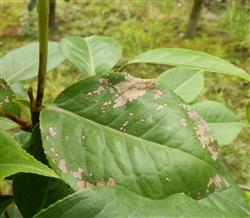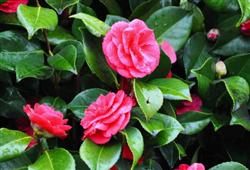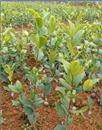How to control camellia withered branch disease and flower rot?

How to control camellia withered branch disease and flower rot? Please introduce the methods for the control of camellia branch blight and flower rot by referring to the following methods: the withered branch disease is caused by pathogenic fungi infecting camellia twigs or old branches, the damaged branches are necrotic, the leaves change from green to yellowish, and gradually dry up and fall off from the top to down. finally, the whole branch withered and died. Control methods: cut off the diseased branches in winter and burn them centrally; remove excess adventitious buds and weak branches to reduce the breeding places of pathogens; before sprouting and sprouting of camellia plants, you can spray 50% methyl topiramate 800 times, or 50% thiram 800 times, or 50% chlorothalonil 600 to 700 times, with emphasis on spraying the wound parts of branches, and spraying the above agents alternately after the disease occurs. Pay attention to the application of appropriate amount of phosphorus and potassium fertilizer and less nitrogen fertilizer. A disease caused by a flower rot fungus infecting petals of camellias. The damaged flowers show brown spots at first and then gradually expand until the whole flower turns brown and wilts. The control methods found that the susceptible camellias were removed in time, the diseased flowers falling on the ground were cleaned in time during flowering, and the diseased flowers were buried or burned; before flowering, the buds were sprayed with 50% methyl thiophanate 500 times or 50% carbendazim 500 times, once every 7 days, three times in a row; varieties that bloom in autumn or late-flowering varieties treated with gibberellin are selected to make them bloom in autumn to avoid the peak of flower rot pathogen. Click to get more camellia planting techniques click to get more flowers and trees planting techniques
- Prev

What are the diseases and insect pests of camellia that need to be controlled?
What are the diseases and insect pests of camellia that need to be controlled? The pests of camellia include aphids, scale insects, red spiders, rust wall lice, leaf rollers and so on. In addition to rust wall lice, common insecticides can be used to control. The most serious are rust wall lice, mite pests, powdery, small individuals, not easy to find, specifically harm the tender leaves and shoots of camellia, making leaves.
- Next

How to graft the seed ear of potted camellia?
How to graft the seed ear of potted camellia? Please introduce the seed panicle grafting of potted camellia can refer to the following methods: 1. Sprouting and panicle cutting: first, sprouting the seeds. When the seed buds are exposed to the surface of the sand bed, grafting is carried out. Rinse the sprouting seeds, cut off the root tip with a knife, and keep it 6 cm long.
Related
- Fuxing push coffee new agricultural production and marketing class: lack of small-scale processing plants
- Jujube rice field leisure farm deep ploughing Yilan for five years to create a space for organic food and play
- Nongyu Farm-A trial of organic papaya for brave women with advanced technology
- Four points for attention in the prevention and control of diseases and insect pests of edible fungi
- How to add nutrient solution to Edible Fungi
- Is there any good way to control edible fungus mites?
- Open Inoculation Technology of Edible Fungi
- Is there any clever way to use fertilizer for edible fungus in winter?
- What agents are used to kill the pathogens of edible fungi in the mushroom shed?
- Rapid drying of Edible Fungi

